
A song so powerful that it can bring a dead man to life.” That’s how Kishore Kumar described Dum maro dum, Asha Bhosle’s peppy song in Hare Rama Hare Krishna (1971). Composed by R D Burman for Dev Anand, the song became the international anthem of the Hippie movement. It inspired pop, jazz and rock versions across the world. It shook up Bollywood music.
The song was actually to be rendered by Lata Mangeshkar, but Dev Anand, with his intuitive flair, decided that it was more apt for Asha Bhosle. He was right. Asha sizzled, Zeenat Aman shimmered, the song thundered to success.
If Lata is the empress of Bollywood melody, Asha Bhosle is the queen of all things bold, brassy and beautiful — and the symbol of change. In her six-decade career, she gave the best cabaret song (Piya tu ab to aaja in Caravan); one of the most iconic songs of Madhubala (Aiyey Mehrban in Howrah Bridge); Dev Anand’s best romantic song (Abhi na jao chhod kar, an Asha-Rafi charmer), and some of the most exquisite ghazals of cinema in Umrao Jaan such as Dil cheez kya hei aap meri, Justuju jiski thi and In aankhon ki masti ke.
She gave the definitive bridal song (Gore gore haathon mein mehndi lagake in Bimal Roy’s Parineeta); an evergreen birthday song (Tum jiyo hazaron saal in Sujatha); and one of the most infectious gypsy songs (Jhumka ghira re in Mera Saaya). Proving she could do much more than belt out just sizzling and romantic songs, Asha has rendered some of the most soulful songs, one of the most heartrending being Ab ke baras bhejo bhaiya ko babul in Bimal Roy’s 1963 classic Bandini, with the music composed by S D Burman.
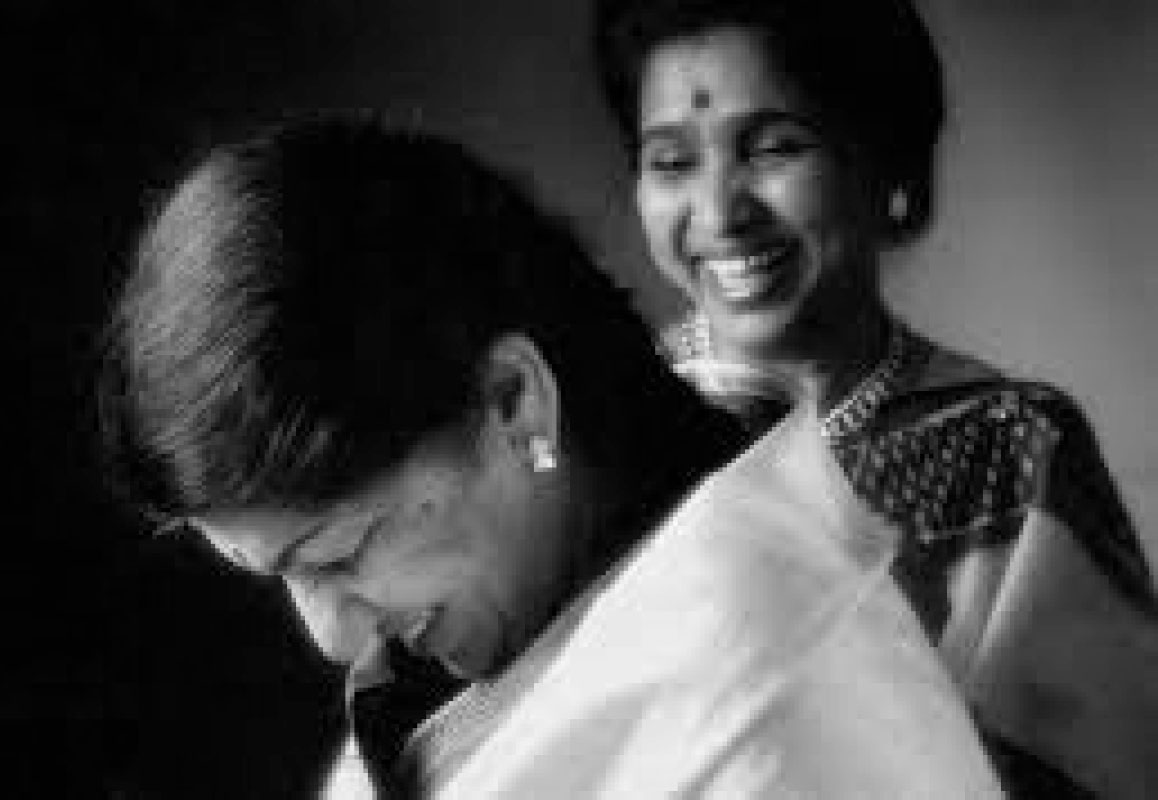
Shammi Kapoor once remarked: “If there was no Mohammad Rafi, I would have asked Asha Bhosle to sing for me.” Amit Kumar, son of Kishore, recalling Asha’s statement that someone like Kishore Kumar is born once in a millennium, added, “one like Ashaji is not born even once in a millennium.” Musicologist Ashok da Ranade says Asha has the ability to musically enliven every timbre that composers deploy.
The beginning
Asha was 10 when she sang her first film song in 1943.
Today, at 87, she has sung over 13,000 songs in over 20 languages, though some estimates put the number past 20,000! These include pop, ghazals, bhajans, qawwalis, folk and classical songs, and Rabindra sangeet. She has been awarded a Padma Vibushan (2008); Dadasaheb Phalke Award (2000); a BBC Lifetime Achievement Award (2002); two national awards (Umrao Jaan, 1981), and for the song Mera kuch saaman from Ijaazat (1987). She won seven Filmfare Awards and a Filmfare Lifetime Achievement Award in 2001.
Once branded as a cabaret singer and pop crooner, a poor shadow of Lata Mangeshkar, Asha is today hailed as an icon of change and innovation, as a singer with rock star charisma, and a person who has challenged and redefined the boundaries of Bollywood music. Recalling her modest beginning, she once said, “When I look back at my early career, I remember dusty movie sets, people running around, lights and cameras. And there was little me, falling asleep and being woken up to sing my part. I think of that time fondly — it was pre-independence India.”
Travails and resolve
But few singers have gone through as much travail in personal and professional life as Asha Bhosle. Few have displayed as much resolve and resilience to overcome prejudice and misfortune.
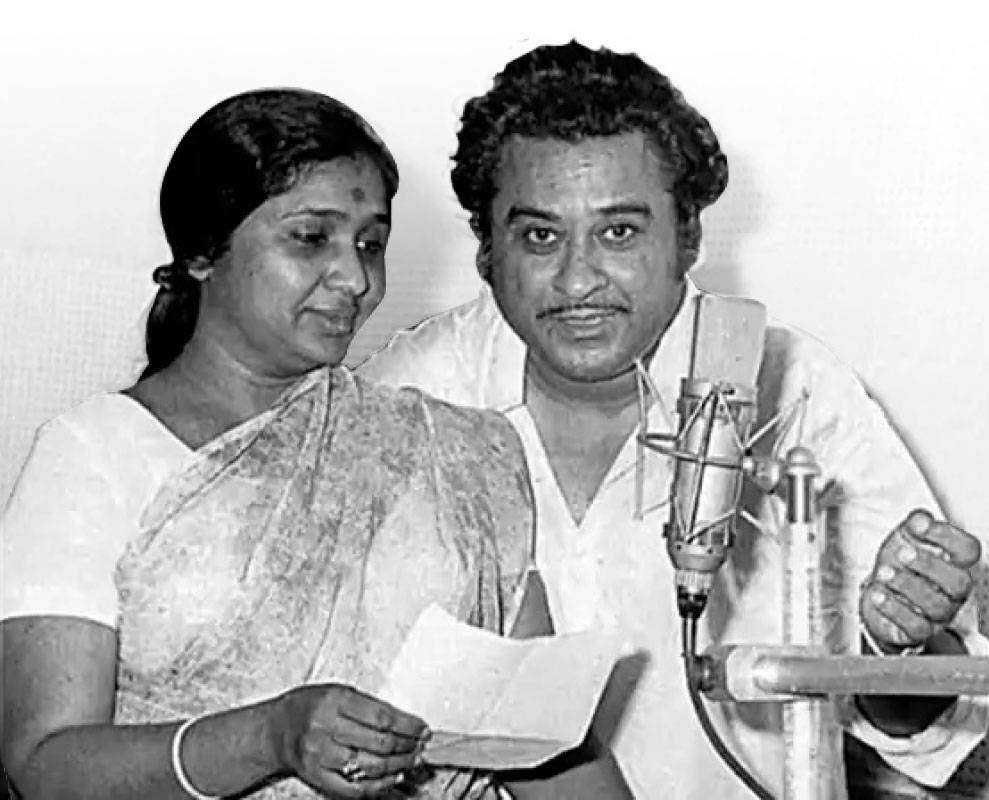
Asha recalls that many years ago, when both she and Kishore were unknown and struggling, composer Khemchand Prakash invited them for a trial recording. They got rejected. She says that as they walked to the Mahalakshmi station, the darkness of the night matched the gloom within. There were several such moments in her career.
S D Burman, O P Nayyar and R D Burman were the three composers most responsible for Asha’s success, though Ravi and Khayyam gave her some wonderful chartbusters and A R Rahman gave her career a new spark with the 1995 Rangeela.
The initial phase of Asha’s singing career, till 1957, was harrowing, partly because of the huge blunder in eloping to marry her neighbour Ganpatrao Bhosle. She was just 16 and Ganpatrao was 31. It was an abusive and exploitative marriage. A ration inspector by profession, he encashed Asha’s skills as a singer. He removed the phone at home, and himself hopped from studio to studio, fixing Asha’s recordings and fees.
By then Lata had become a celebrity, much sought after by composers and producers. Asha sang whatever came her way — usually songs rejected by other singers and night club songs (often for Helen). But she was determined to carve her own niche, and not be a second Lata.

In 1957 she got a breakthrough; singing for S D Burman in two Dev Anand films (Nau Do Gyarah and Paying Guest). Ankhon mein kya ji with Kishore (Nau do Gyarah) and Chhod do aanchal (Paying Guest), also with Kishore, were among the most endearing songs of the 1950s.
Career-changing movie
But her career-changing movie was the 1957 blockbuster Naya Daur, which starred Vyjayanthimala and Dilip Kumar, produced by B R Chopra. The feisty Maang ke saath tumhara, one of O P Nayyar’s famous songs, had all of India humming the Asha-Rafi duet. Dilip, driving Vyjayanthi in a tonga, became an enduring image of Bollywood music. Naya Daur also featured other hits including the memorable chorus song Saathi haath badhana.
Nayyar said he needed “a powerful full-throated, sensuous voice”, and he found it in Asha. The two created 324 songs together.
In 1960, Asha walked out on her husband, with her two children Hemant and Varsha. She was pregnant with a third child. She had to give up her savings and her car. In the mid-sixties, she began a live-in relationship with O P Nayyar. Along with love, music blossomed and Asha soared.
Some wonderful Asha solos under O P’s banner were Ayiye meharban, Poocho na hame hum unke liye (Mitti Mei Sona, 1963) and the haunting Jaaiye aap kahan jayenge (Mere Sanam,1964), and they turned out to be some of the finest female romantic solos. There were spellbinding duets in the 1962 Ek Musafir Ek Haseena and the 1964 Kashmir Ki Kali. Aao huzoor tumko (Kismet, 1968, filmed on Babita) was simply magical.
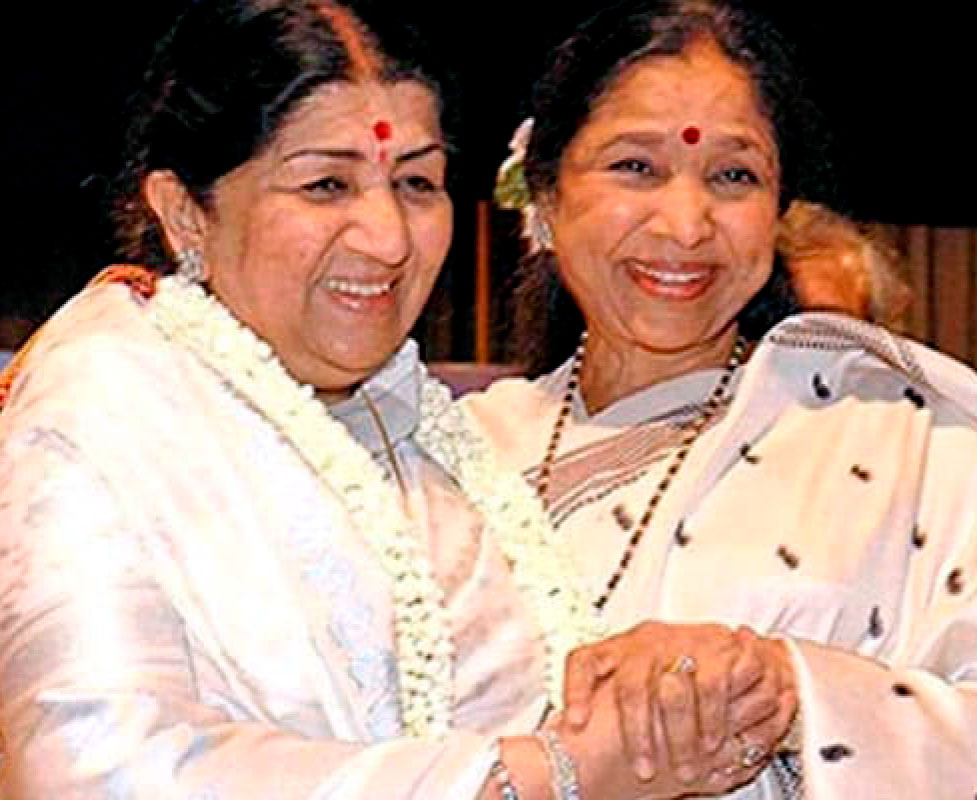
Asha terminated the jugalbandi with O P Nayyar in 1972. There were differences and personality clashes. When Nayyar slapped Asha’s teenage daughter Varsha, she decided that enough was enough. So bitter was the parting that Asha disowned the surpassingly beautiful song Chain se ham ko kabhi she had rendered for O P in the 1972 Pran Jaaye Per Vachan Na Jaye. She didn’t accept the coveted Filmfare Best Playback Award for that song. The irony and pathos in the song, in the context of her bitter parting with Nayyar, can’t be ignored.
Asha and R D Burman
When S D Burman assigned son R D Burman (Pancham) to rehearse a song of Nau Do Gyarah with Asha, she was upset to do so with “Burman’s raw son”, and not Kishore. But Asha soon learned to respect Pancham’s originality and talent.
With the 1966 Teesri Manzil and its unorthodox songs and music, Pancham demonstrated his genius. Asha’s splendid solo, O mere sona re sona re sona in Teesri Manzil wowed critics and laymen alike. A string of Pancham-Asha chartbusters followed — the sprightly Piya tu ab to aaja in Caravan (1971), the epoch-making Dum maro dum, the heart-stealing Chura liya in Yaadon Ki Baarat (1973).
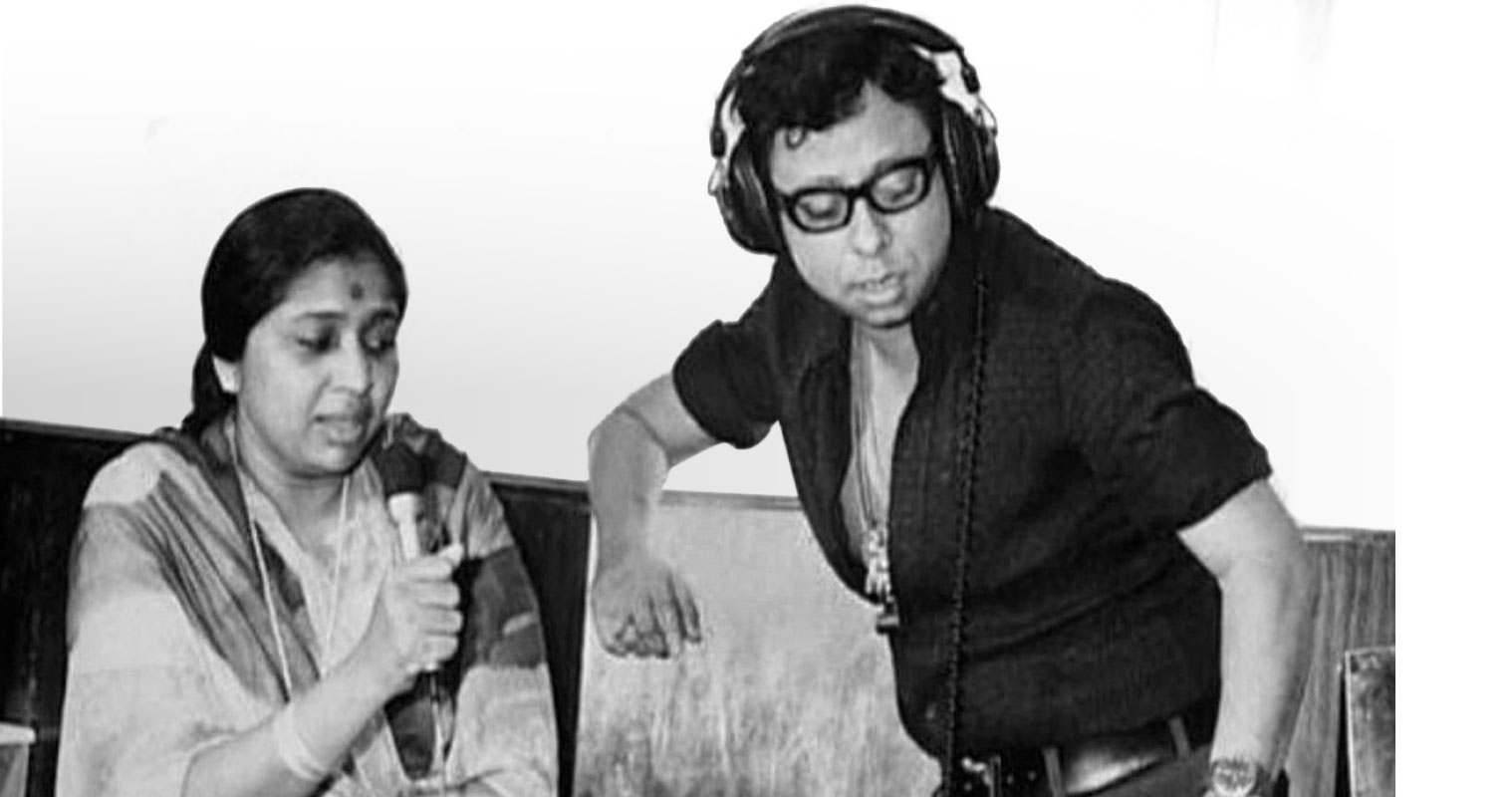
The two sealed their strong bond, with a wedding in 1979. Asha told a journalist, “For years, Pancham would send me flowers anonymously. One day the roses were delivered in the presence of (lyricist) Majrooh saab and Pancham. I said, “Throw them away. Some fool keeps wasting his roses on me.” Pancham’s face fell. That’s when Majrooh saab laughed, and said, ‘It’s this fool who’s been sending you the roses’.”
“I didn’t marry Asha, I married her voice,” said Pancham. It was a marriage of music and companionship. Both had eclectic tastes. They would sometimes listen for hours at night to music of all genres — folk, pop, jazz, Bismillah Khan, the Beatles, Latin, Arabic and Bengali folk. Asha would say, “Let me go to bed, you’ll get up only at 11am but I have a recording at 10am!”
Asha was house-proud and zealous about order and cleanliness, Pancham was not, he dreaded her cleaning sprees. On one of her birthdays, he gifted her a broom wrapped in a silver foil!
A spate of tragedies
When Pancham died in 1994, Asha was devastated. More tragedies were to come. She doted on her children. In 2012, daughter Varsha committed suicide by shooting herself when Asha was in Singapore. She was 56. In 2015, her second son Hemant died of cancer in Scotland at the age of 66.
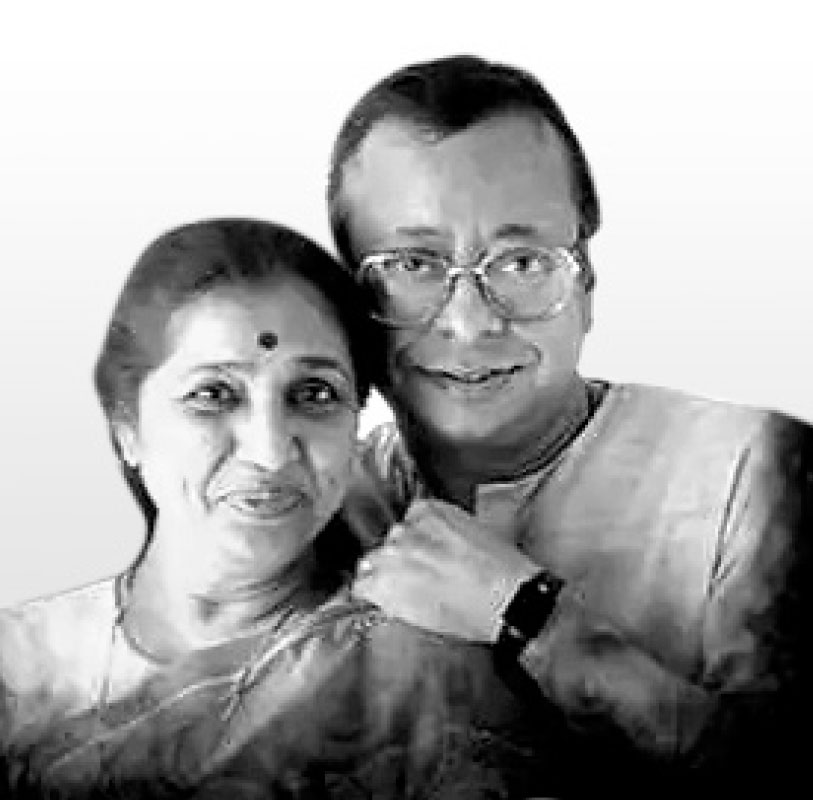
Asha took care of Pancham’s mother for 13 years after his death. She even took care of first hubby Ganpatrao Bhosle’s mother for four years after his death, as the two had no problems.
In 1996, Asha produced Rahul and I, a remix of songs she had done with R D Burman. She disliked the remix business but put this album together to prevent someone else from coming up with a terrible remix.
International concerts and collaborations
During the 1980s and 1990s, Asha went globe-trotting and staged several concerts in the US, UK, Canada, UAE and other countries. Her numerous international music collaborations testify to her appeal abroad. In 1991, British singer and songwriter Boy George produced a song titled “Boy George Sings, Bow Down Mister”. It comprised colourful visuals from the Mahabharata, Asha’s recitation of verses from the Gita, and Boy George’s interpretation of Indian spirituality.
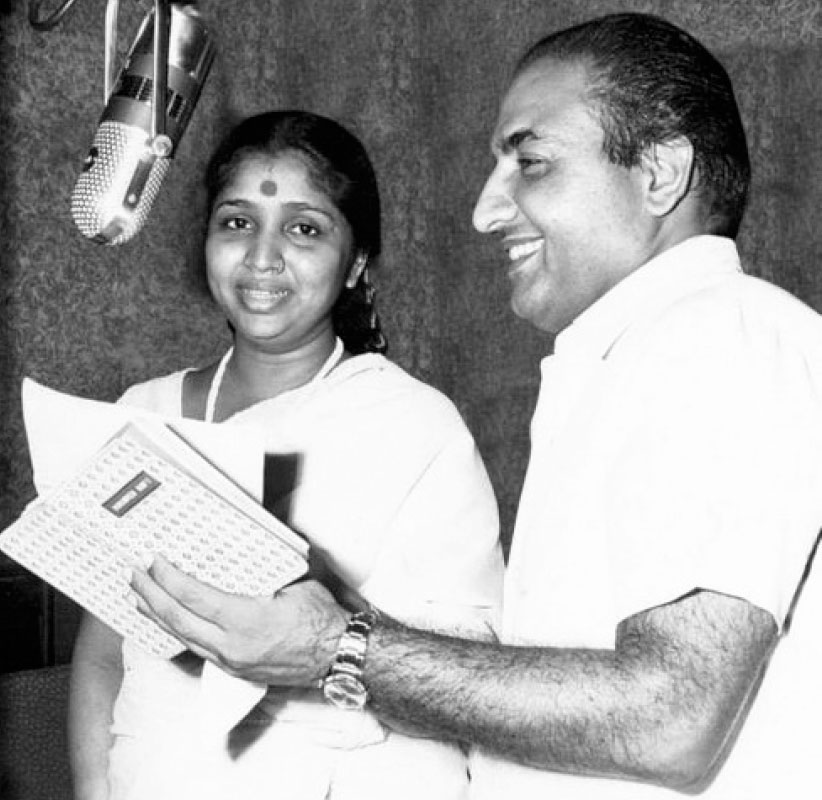
In 1997, the British band Cornershop paid tribute to Asha with the song Brimful of Asha, an international hit. Says Asha: “I was at the immigration counter at Heathrow Airport once. When the young officer learned that I was the Asha from Brimful of Asha, he was very excited and left his post and called his friends over to meet me.”
If it wasn’t for music, she would have become a cook, Asha has often said. “Cooking comes from the heart. It should be made with love, for others to enjoy, just like singing.”
Incredibly, Asha is the inspiration behind 15 international restaurants, six in Middle East and two in the UK. The chain, called Asha’s, started with a restaurant in Dubai in 2002. The restaurants have won numerous awards. The food ideas and recipes are hers. “Khana and gana are my formula for happiness,” she says.
Asha Ki Asha
Asha has enriched every decade of Bollywood music since she began singing. She now seeks to enrich the future of Bollywood music through new talent, through her online talent contest, Asha Ki Asha. Aspiring singers send her a two-minute video of their music, which is uploaded on to her website. The best new voice will get a prize of ₹100,000. Other deserving voices will be promoted on her Youtube channel and through social media.

“I love this opportunity to share my 70 years of experience with youngsters and give back to music what I got from it,” says Asha.
Editor’s pick
- Ab ke baras bhejo bhaiya ko babul
- Maang ke saath tumhara
- Aankhon me kya ji
- Dil cheez kya hei, aap meri jaan lijiye
- Deewana hua badal
- Chhod do anchal
The author is a senior journalist and a member of the Rotary Club of Madras South.





